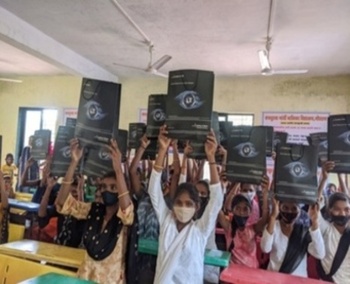How Solar Energy Can Help Achieve India’s Sustainable Development Goals (SDGs)

The Importance of Solar Energy in India

Key benefits of solar energy in India:
- Abundant solar resource: Most parts of India get abundant sunshine throughout the year, and hence the country is suitable for the production of solar energy.
- Reduced carbon emissions: Solar energy is a very clean and green source of energy, which considerably reduces the emission of greenhouse gases as compared to other sources of energy.
- Energy security: Solar energy can help India decrease its dependence on conventional fuel and improve the country’s energy security through the domestic utilization of solar energy.
- Economic growth: The solar energy sector plays an important role of ushering in employment opportunities and fuelling economic growth, especially in the rural regions.
- Decentralized power generation: Solar power can be produced at both utility and distribution levels, bringing in power to individuals and decreasing pressure on the centralized system.
Solar energy in sustainable development – Understanding the SDGs
The Sustainable Development Goals (SDGs) are 17 goals that were adopted by the United Nations in 2015. These goals involve tackling poverty, unemployment, inequality, climate change, energy, and sustainable living amongst other societal issues. Let’s look at the role of solar energy in sustainable development, via the SDGs-
- Goal 1: No Poverty – Access to inexpensive and stable energy is essential for eradicating poverty. The use of solar energy can help bring electricity in areas that are not connected to the main power grid, and help the people of such areas lead better lives. For instance, solar energy systems can be used to power schools, hospitals, centres of livelihood and homes, ensuring higher productivity, hence encouraging economic growth in the rural areas.
- Goal 7: Affordable and Clean Energy – Solar energy is the primary focus when it comes to affordable and clean energy. The availability of solar technology has improved greatly in the past decade due to the awareness that has been created. Also the fact that the basic “raw material” for solar energy is 100% free, and practically infinite makes it a far more reliable and viable resource of energy! Better investments in solar power will help India to improve energy availability and also introduce more sustainable energy sources.
- Goal 8: Decent Work and Economic Growth – The solar energy production will also help to create millions of new jobs both in the manufacturing and installation of gadgets and devices as well as in the maintenance of the new power generation structures. By supporting solar energy projects, India can foster economic development of the country and simultaneously ensure employment to its populace.
- Goal 11: Sustainable Cities and Communities – Most of the energy consumed is from urban areas. That is why it is relevant to integrate solar power into urban construction—like rooftops solar systems—in cities. This approach lessens the burden on conventional energy sources and has low levels of emissions to the atmosphere.
- Goal 12: Responsible Consumption and Production – With the utilization of solar energy, it is easier to minimize resources consumption and reduce wastage. Solar panels can also be recycled and used to make new solar panels and other products.
- Goal 13: Climate Action – Solar energy has the least impact on the greenhouse effect compared to other sources of energy. A shift to solar power can enable India to truly become a global leader and a responsible nation when it comes to global warming and climate change.

The Role of Solar Energy in Sustainable Development
Solar power, as an important aspect of the sustainable development initiatives, is not just about the provision of light. Having understood how solar energy and sustainable development are related, let’s look at the key areas where solar energy is making a significant impact.
- Innovative technology solutions – Solar power technology including solar panels and batteries provide an effective way of harnessing and using energy. They can assist in managing energy usage in homes and industries thus supporting sustainability.
- Energy independence – The use of solar energy means that India does not have to rely so much on imported fossil fuels, hence increased energy security. This change also enhances national security while at the same time protecting the economy from volatility of the international oil prices.
- Community empowerment – Another benefit of solar energy projects is that they can engage community members in the implementation process. This leads to accountability thus promoting sustainability and community involvement.
- Resilience against climate change – Solar energy can help adapt to climate change effects. For instance, decentralised solar power installations can generate power during calamities when main power supply infrastructure can collapse, critical functions must proceed.

Project Chirag – lighting up the road ahead!
While India has made significant strides in solar energy deployment, there are still challenges to overcome. These include financing, grid integration, and policy support. However, with continued government initiative, technological advancements, and increased private sector investment, India can unlock the full potential of solar energy and accelerate its sustainable development journey. By supporting Project Chirag, you’re not just contributing to India’s sustainable development goals, you are directly empowering rural communities.

Join us in this mission to illuminate rural India and create a sustainable future. Together, let’s harness the power of the sun and empower India’s villages. Donate to Project Chirag, and light up the villages!


